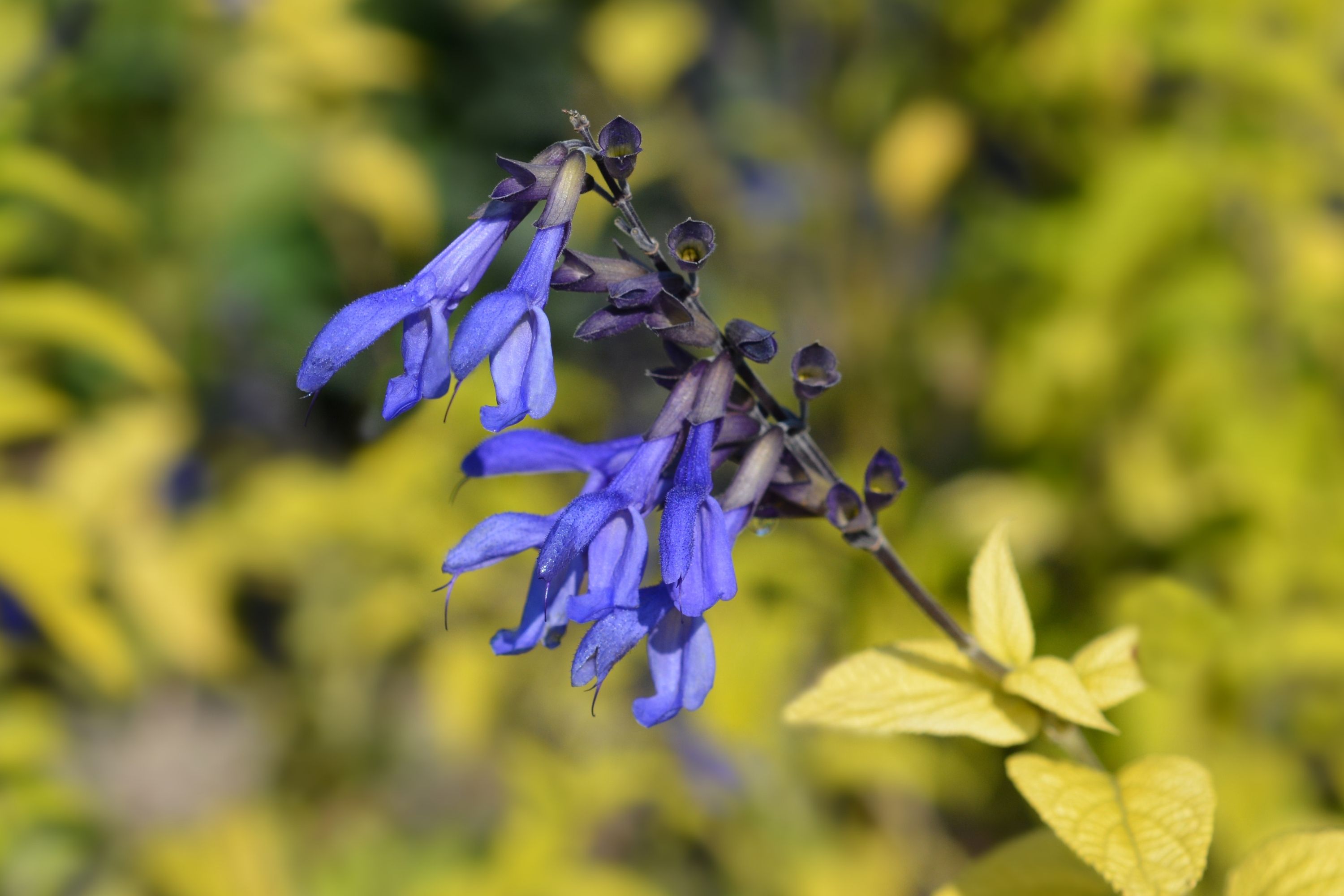Anise-scented sage
(Salvia coerulea)

Description
Salvia coerulea, also known as the blue sage or the blue salvia, is a species of flowering plant that belongs to the Lamiaceae family. This herbaceous perennial is native to the highlands of southern Mexico and Guatemala, where it grows in moist and shaded environments. The plant is highly prized for its stunning blue flowers, which attract pollinators such as bees, butterflies, and hummingbirds. Physical Characteristics Salvia coerulea typically grows to a height of 50 to 100 cm (20 to 40 in) and a width of 30 to 60 cm (12 to 24 in). The plant has a branching stem that is covered in small, green leaves. The leaves are oblong in shape and have a velvety texture. They range in size from 5 to 12 cm (2 to 5 in) in length and 2 to 6 cm (1 to 2.5 in) in width. The blue flowers of Salvia coerulea are borne on long spikes that emerge from the plant's stem. The flowers have a distinctive tubular shape and are a stunning shade of blue, which ranges from pale blue to deep violet-blue. Each flower measures around 2.5 cm (1 in) in length and is composed of two lips. The upper lip is curved and hooded, while the lower lip is three-lobed and extends outward. Cultivation Salvia coerulea is a relatively easy plant to grow and can be cultivated in a variety of settings, including gardens, containers, and as an indoor plant. The plant prefers moist, well-drained soil and partial shade. It can tolerate full sun but may require more frequent watering in these conditions. Propagation Salvia coerulea can be propagated from seeds or cuttings. To propagate from seeds, sow them in a well-draining soil mix and cover with a thin layer of soil. Keep the soil moist but not waterlogged and place the container in a warm and bright location. Germination usually occurs within two weeks. To propagate from cuttings, take a 10 cm (4 in) stem cutting from the parent plant and remove the lower leaves. Dip the cut end in rooting hormone and plant it in a well-draining soil mix. Keep the soil moist and place the container in a warm and bright location. The cutting should root within a few weeks. Uses Salvia coerulea is primarily grown for its ornamental value. Its striking blue flowers make it a popular choice for gardens, containers, and indoor settings. In addition to its visual appeal, the plant is also used in traditional medicine to treat a variety of ailments. Traditional Medicine Salvia coerulea has a long history of use in traditional medicine in the regions where it grows. The plant is used to treat a variety of ailments, including headaches, stomachaches, and diarrhea. It is also used as a sedative and to promote relaxation. Chemical Composition Salvia coerulea contains several active compounds that are believed to contribute to its medicinal properties. These include: Salvinorin A: a psychoactive compound that is responsible for the plant's hallucinogenic effects. Rosmarinic acid: an antioxidant and anti-inflammatory compound that is also found in other plants in the Lamiaceae family. Ursolic acid: a triterpenoid compound that has anti-inflammatory and antitumor properties. Precautions Salvia coerulea contains salvinorin A, a potent psychoactive compound that can cause hallucinations when consumed in high doses. The plant should not be ingested, and caution should be taken when handling it.
Taxonomic tree:







